Pekka Buttler, May 2025
Introduction
First off, you can read this lens’ data sheet here.
Second: For brevity I will also be referring to this lens as the Topcon RE 100mm f/2.8 and even Topcon 100/2.8.
This lens was introduced in 1965 shortly after the 1963 introduction ofthe ground-breaking Topcon RE Super camera. It hails from Topcon’s ‘pro’ line of cameras and lenses (See the JAPB company profile for Topcon).
Its mainline specifications of 100 mm f/2.8 make it a short-ish tele lens. In Topcon’s mid-60s lineup of fully automatic lenses (25/3.5, 35/2.8, 58/1.8, 100/2.8, 135/3.5, 200/5.6), this lens clearly plays the role of portrait lens. This design remained ‘the’ Topcon RE system’s short tele lens until the 1970 introduction of the Topcon RE 85/1.8 and even after that this lens remained in the lineup as the less expensive portrait lens.
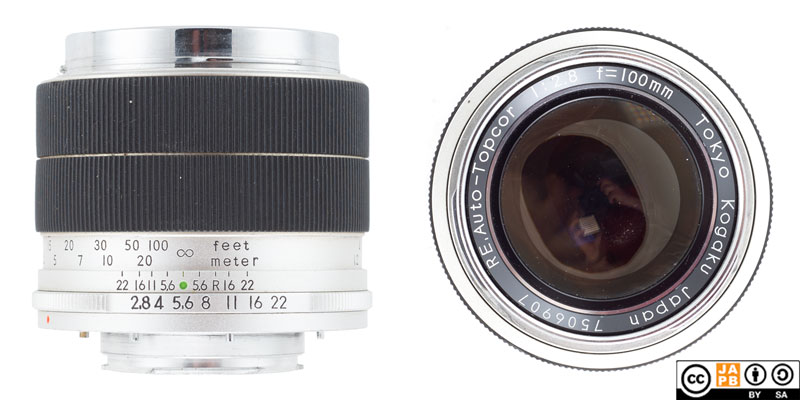
Ergonomics
First off, Topcon RE lenses use their own variant of the Exakta mount. The short version is that it’s a classic Exakta bayonet, with some added mechanical interfaces (indicator prongs and stop-down levers) to facilitate the level of automation desired by Topcon. Topcon RE lenses and Exakta cameras are not a necessarily trouble-free match (or vice versa), but – importantly – any Exakta adapter that you are likely to have will work perfectly with Topcon RE lenses. If you want to dig into the details, feel free to do so at the JAPB article on the Exakta mount and its variants.
Assuming you already have an Exakta adapter for your camera, you just insert this lens, twist and listen for the locking lever to snap. Then you go shooting.
The Topcon RE 100 mm f/2.8 lens is a decently sized lens, roughly on par with the average 60s 100/2.8. The lens makes good use of its length by offering the photographer a very wide focus ring that is exquisitely dampened and a joy to use. During my walk-around it was around +5° C which in combination with a 7 m/s northerly wind blowing in from the Gulf of Finland (==> feels like sub-zero) pretty much guaranteed that I never took of my fleece gloves. Even so I had no problems manipulating the focus ring with precision.
Regarding the aperture ring I was not so lucky. The aperture ring of Topcon RE lenses invariably is a rather narrow affair, which – when mounted on a Topcon RE camera – ends up quite close to the camera housing. Luckily things are actually a bit better when adapted as the adapter makes finding the aperture ring possible even when wearing gloves.
The aperture ring is otherwise nicely tactile, with clicks that are both easily felt and counted (even when wearing gloves) without at any stage putting up considerable opposition. I have shot this lens a decent amount of time (mostly adapted but also natively) and whenever I’ve decided to check what my aperture value is (when I’ve counted the rapid clicks and think I am at a specific aperture, only to decide to nevertheless check it visually) I have almost invariably been right on target.
Setting up the walk…
All the images in this walk-around have been taken within roughly 3 hours of each other on the 16th of March 2025 (Yes, its taken me almost 2 months to get this walk-around published).
I was again visiting Tallinn (as I had been doing frequently in the winter and early spring of 2025), but this time had decided to come a day in advance, take my camera and some lenses for a walk and meet some old acquaintances.
Owing to some bad experiences with taxis right after Estonia’s independence, my main mode of transport in Tallinn are still walking and public transit. I am especially a fan of the Tallinn tram network.
The photo walk started out with a few shots around the Tallinn railway station before I boarded a No. 2 tram and traveled to its terminus on the Kopli peninsula. From there I wandered through the old housing areas and a former cemetery to Pelguranna beach, before heading back up to a tram stop in the district of Sitsi. For most of the time the sun was shining, but as you can see in some pictures, there also was a period of light overcast.
Images and commentary
I did this walk-around using my Sony ⍺7R2 and a no-name Exakta to Sony FE (NEX) adapter
As with all wide-aperture lenses, the Topcon RE 100 mm f/2.8 is a tad soft wide open. But compared to many other short tele lenses, that softness is relatively minor, explained – in part – by that the maximum aperture is f/2.8 (and not f/1.8 or faster). For a collage of centre detail at various apertures, see below.
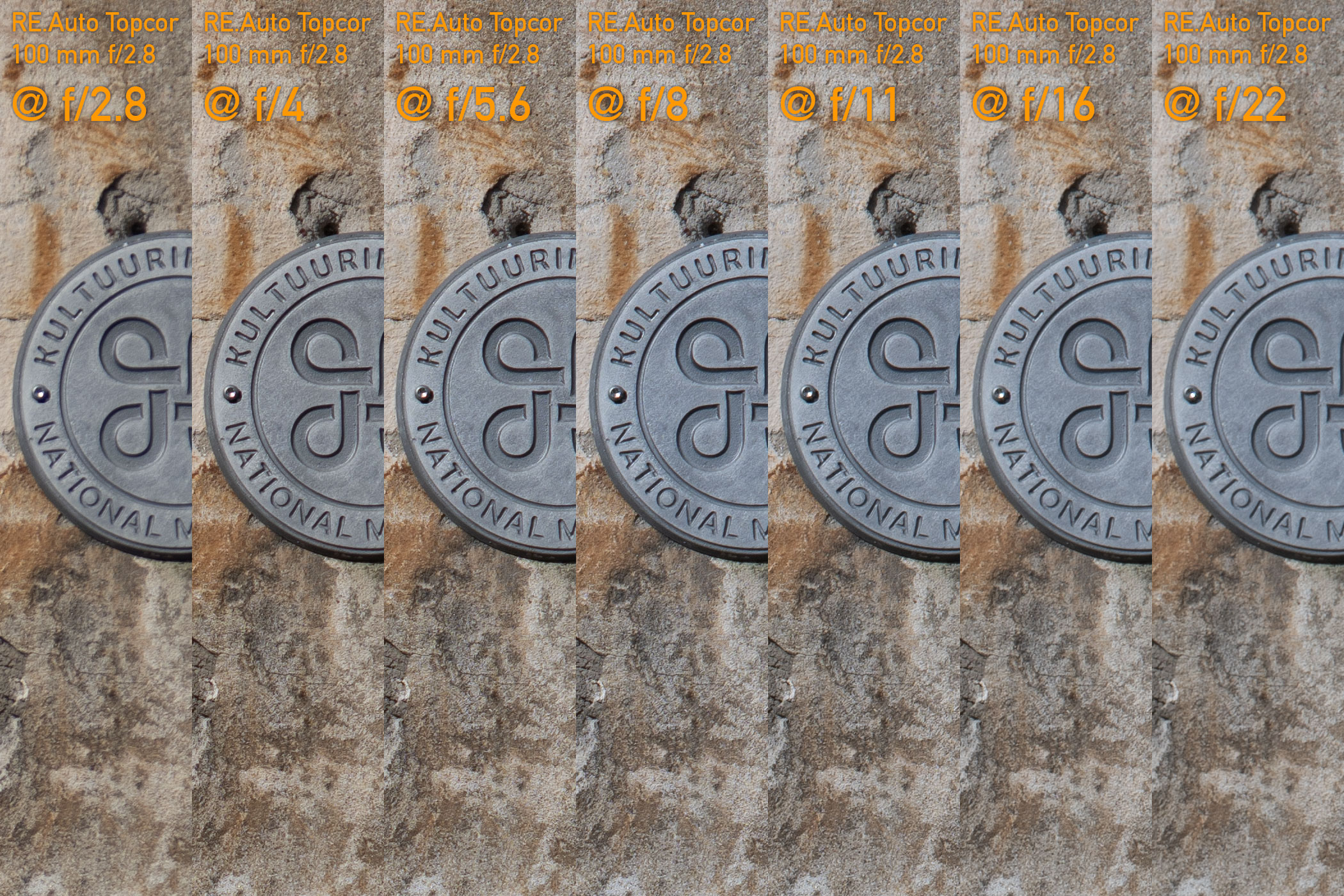
(Open image in new tab for 1:1 version)
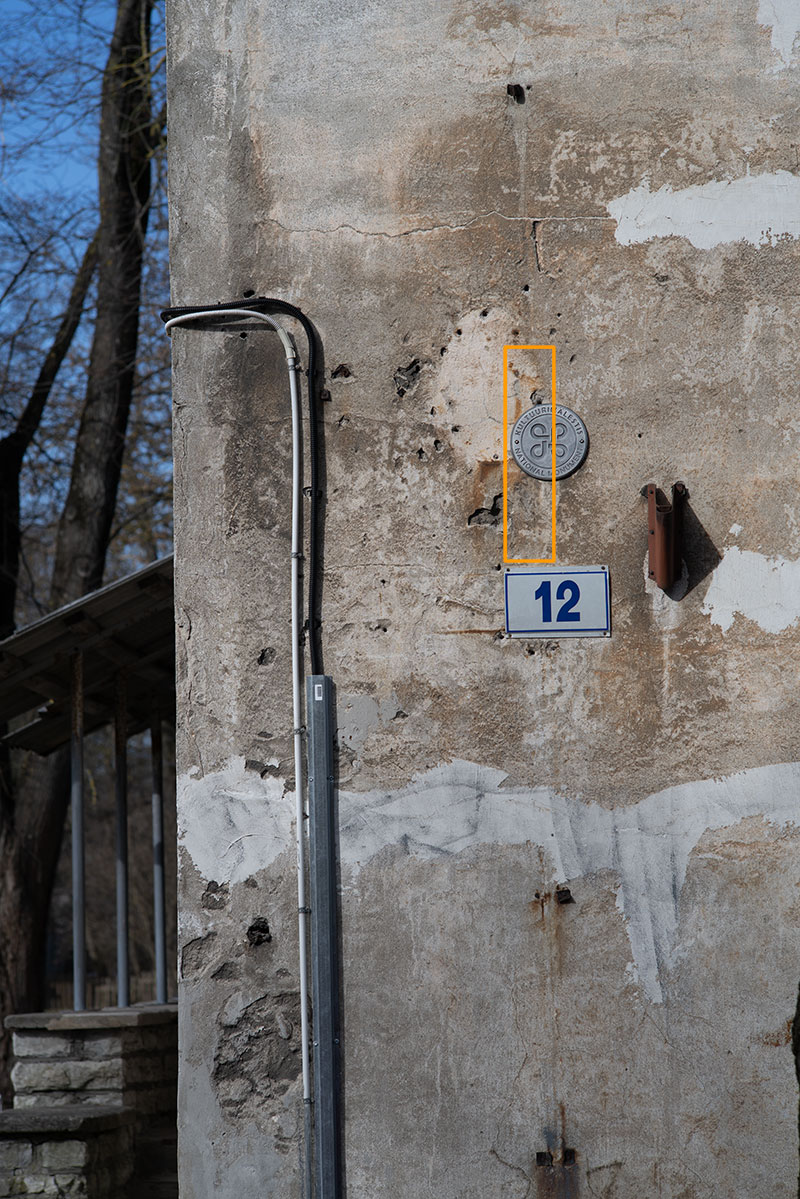
(orange rectangle shows sample area for collage above)
On closer inspection, that wide-open softness visible in the Topcon’s f/2.8 shots is a rather balanced combination of a mild loss of definition in with an equally mild loss of contrast (please see the JAPB article on sharpness and how it has two components: definition and contrast).
Why is this distinction important? In short because contrast can be easily boosted in post-production (your image editor’s dehaze function is key here) , whereas the same does not apply to definition.
The Topcon 100/2.8 does show some vignetting wide open (f/2.8) but it is not particularly bad even at maximum aperture. By f/4 the issue is no longer field-relevant and by f/8 vignetting is totally gone.
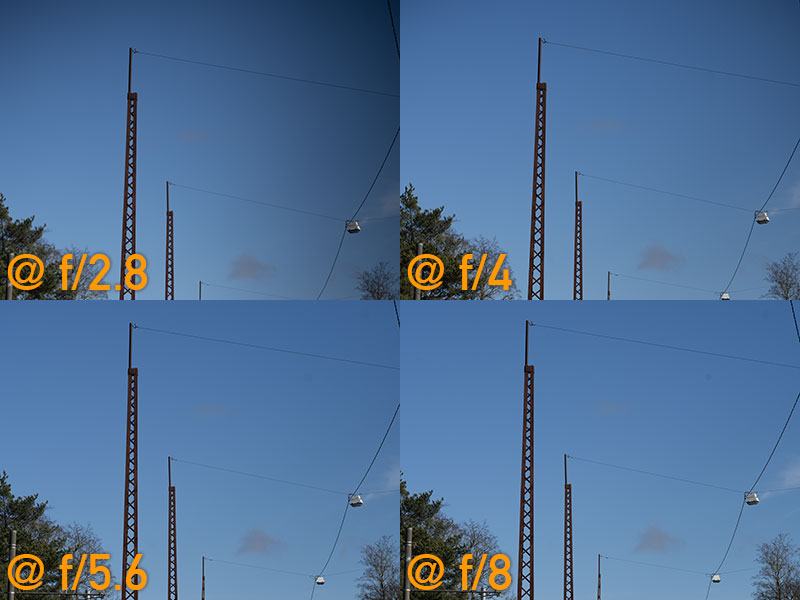
Chromatic aberrations can be a problem with the Topcon RE 100 mm f/2.8, especially in extreme contrast situations. This is especially evident in the sample images below.
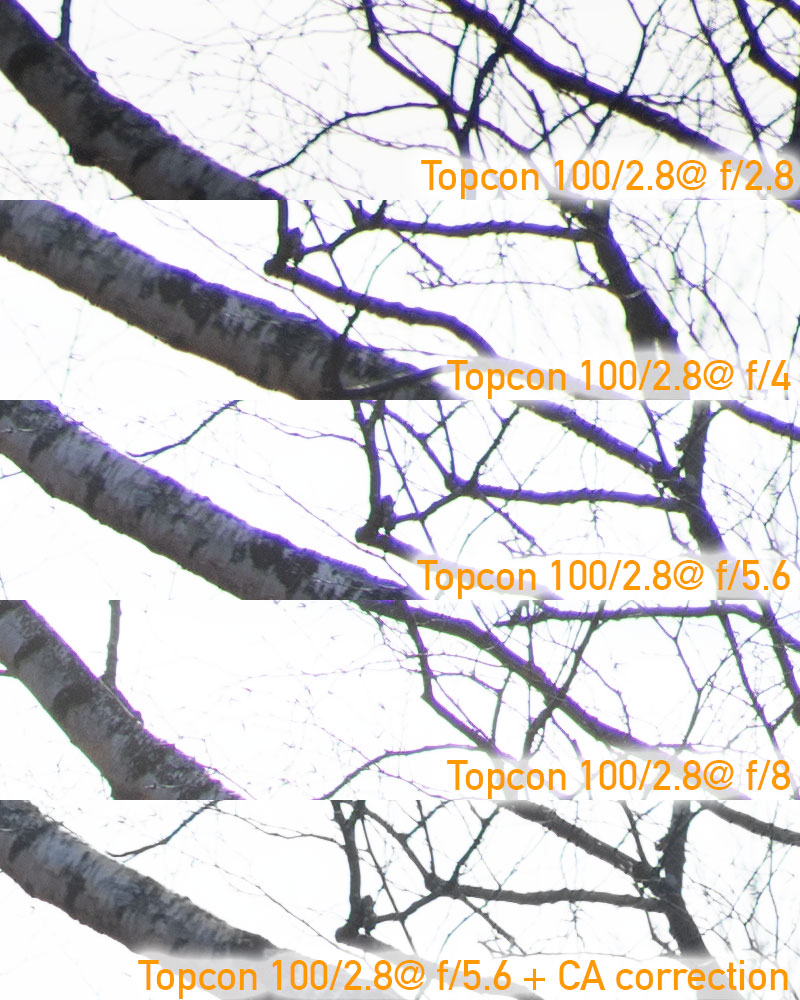
These are corner crops and the pictured branches are somewhat in front of the focus plane. These are a clear-cut case of lateral chromatic aberration (see more about the topic in the JAPB article on Chromatic Aberrations). As is often the case with lateral chromatic aberration, they start out getting worse as you stop down before starting to become less bad again. One advantage of lateral CAs is that they are relatively easy to correct in post (the last excerpt shows a three-click remedy in Adobe camera raw1.
In contrast, the lens showed no discernible longitudinal chromatic aberrations at any apertures.
Regarding ghosting and veiling flare, the lens is well-behaved for a mid-60s lens. There is a rather mild level of veiling, and while it is not easy to make the lens produce prominent ghosts, that is possible. Whatever coating technology this lens uses, it actually seems to be rather good considering it’s a 60s lens.

Image with sun ≈10° outside frame. Veiling is there and ghosts as well.
Being a prime lens in the short tele range, it is not surprising that the lens has no field-relevant geometric distortions.
With an MFD of 1,2 m this lens is definitely not a macro lens. However in its intended milieu that 1,2 metre MFDis short enough for most images.
I generally found the colour balance of the lens to be neutral, maybe a bit on the warm side.
I have not managed to find indications of field curvature. That does not mean that there definitely is none, but it is does mean that whatever field curvature there is, it is by no means field-relevant.
Bokeh is not unimportant for a short tele lens. At the same time Bokeh is notoriously subjective, so the best I can say is that I generally find the Bokeh to be very pleasing.
At a tele lens with a maximum aperture of f/2.8 this is not a lens intended for night-time shooting without a sturdy tripod. I have not yet taken any nighttime shots with this lens, so I cannot comment with any certainty on comatic aberration or astigmatism but I will report back.
All in all, if you are interested in a 1960s 100/2.8 lens you can certainly do worse than the Topcon RE 100 mm f/2.8. While this lens has its weaknesses (especially in terms of lateral chromatic aberrations and 1960s coating technology) it does pack quite a punch.
Gallery shots
All images below shot on 16. March 2025 between midday and 3 pm on a Sony ⍺7R2. Minimum edit in post (unless specifically stated otherwise: ACR default conversion from RAW), straighten, resize to 2048 and JPEG 9. Feel free to click on images to see larger versions.

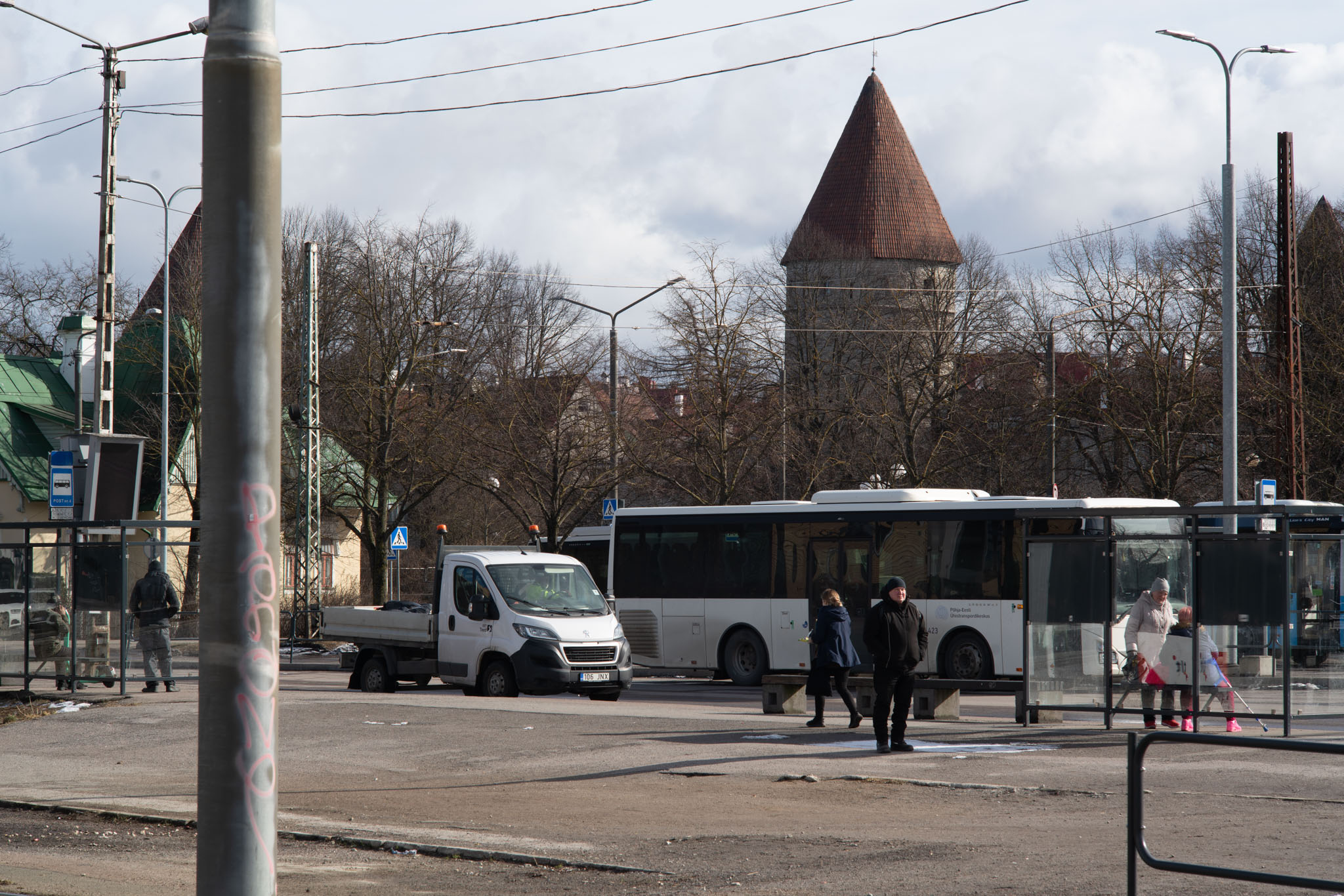
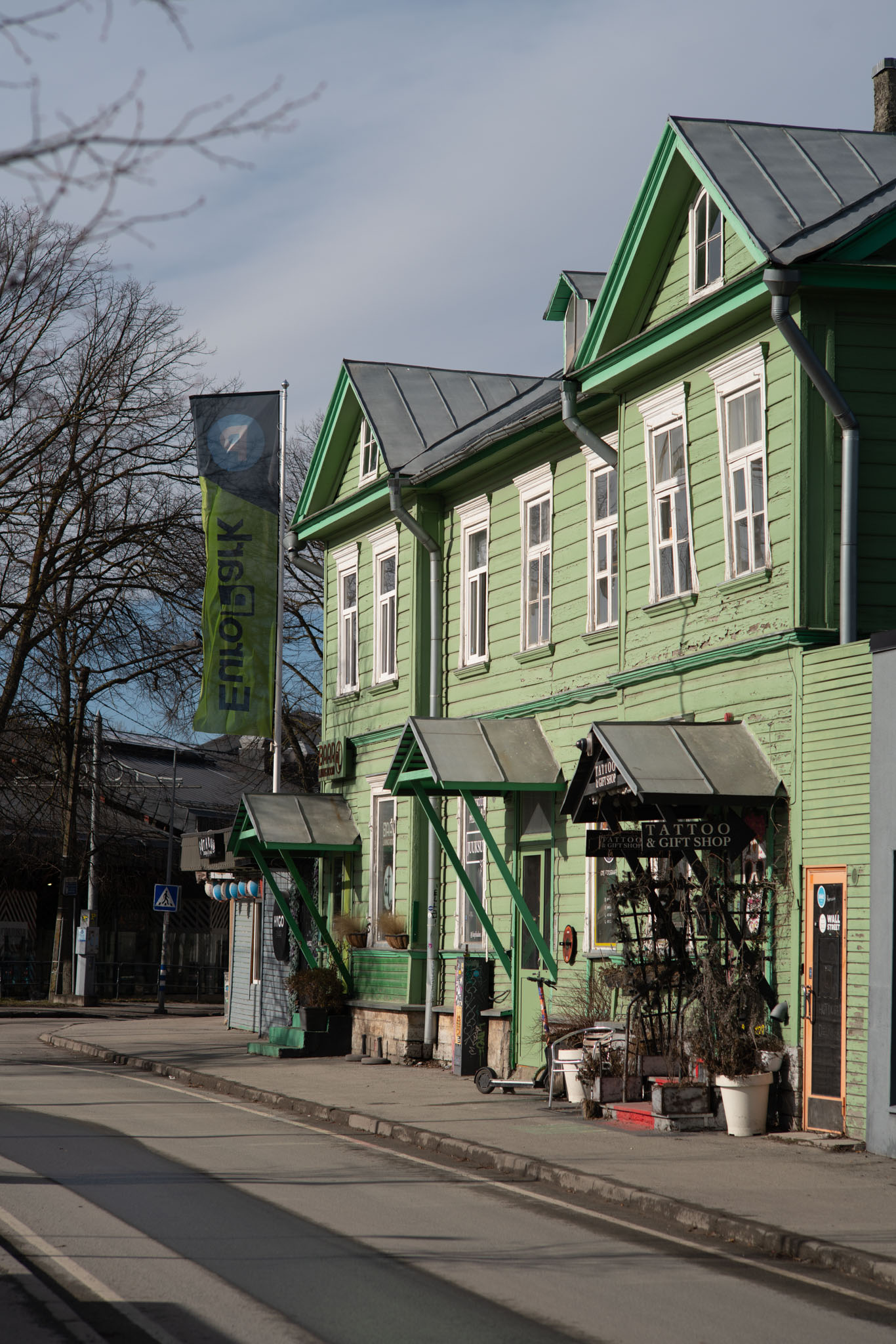
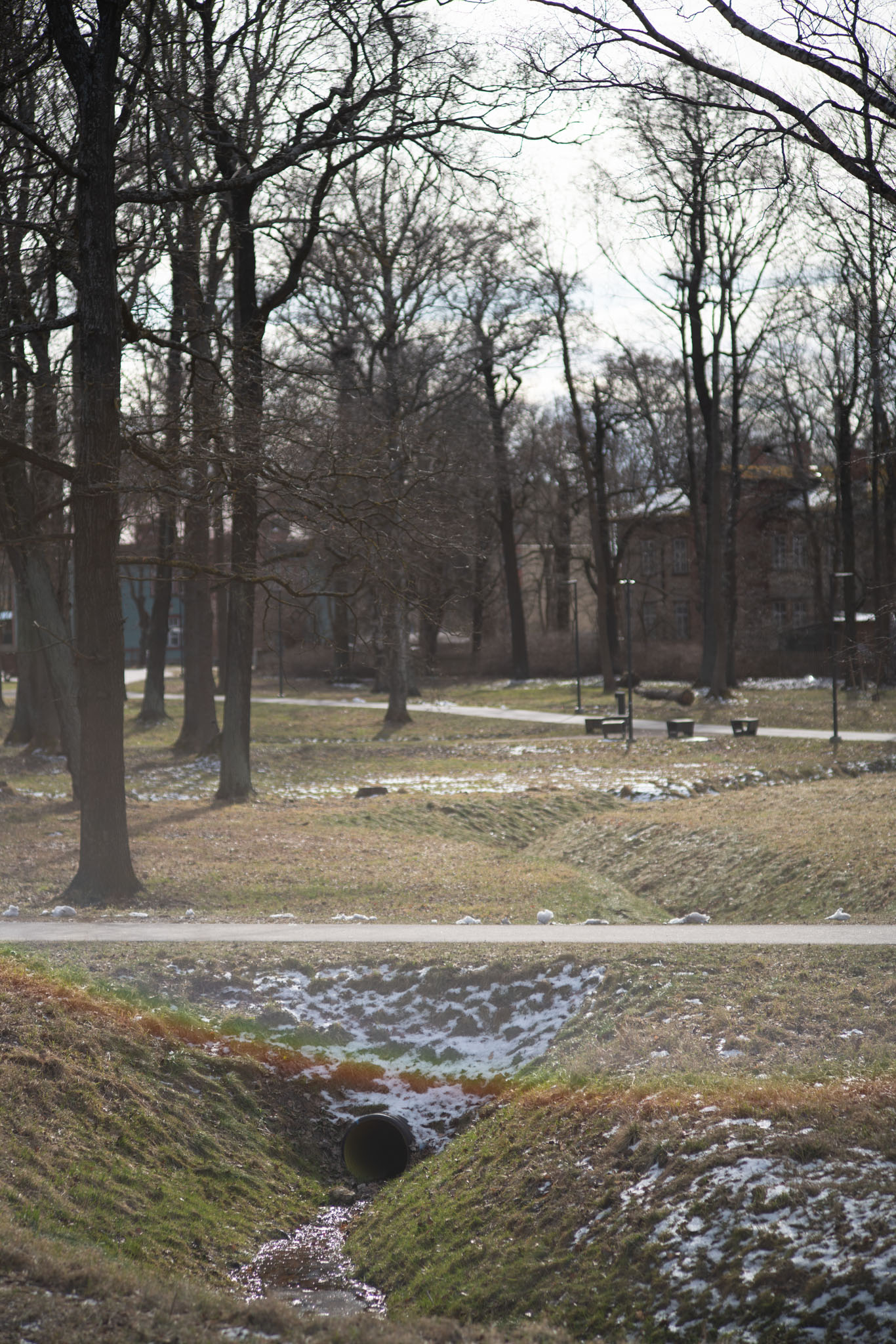
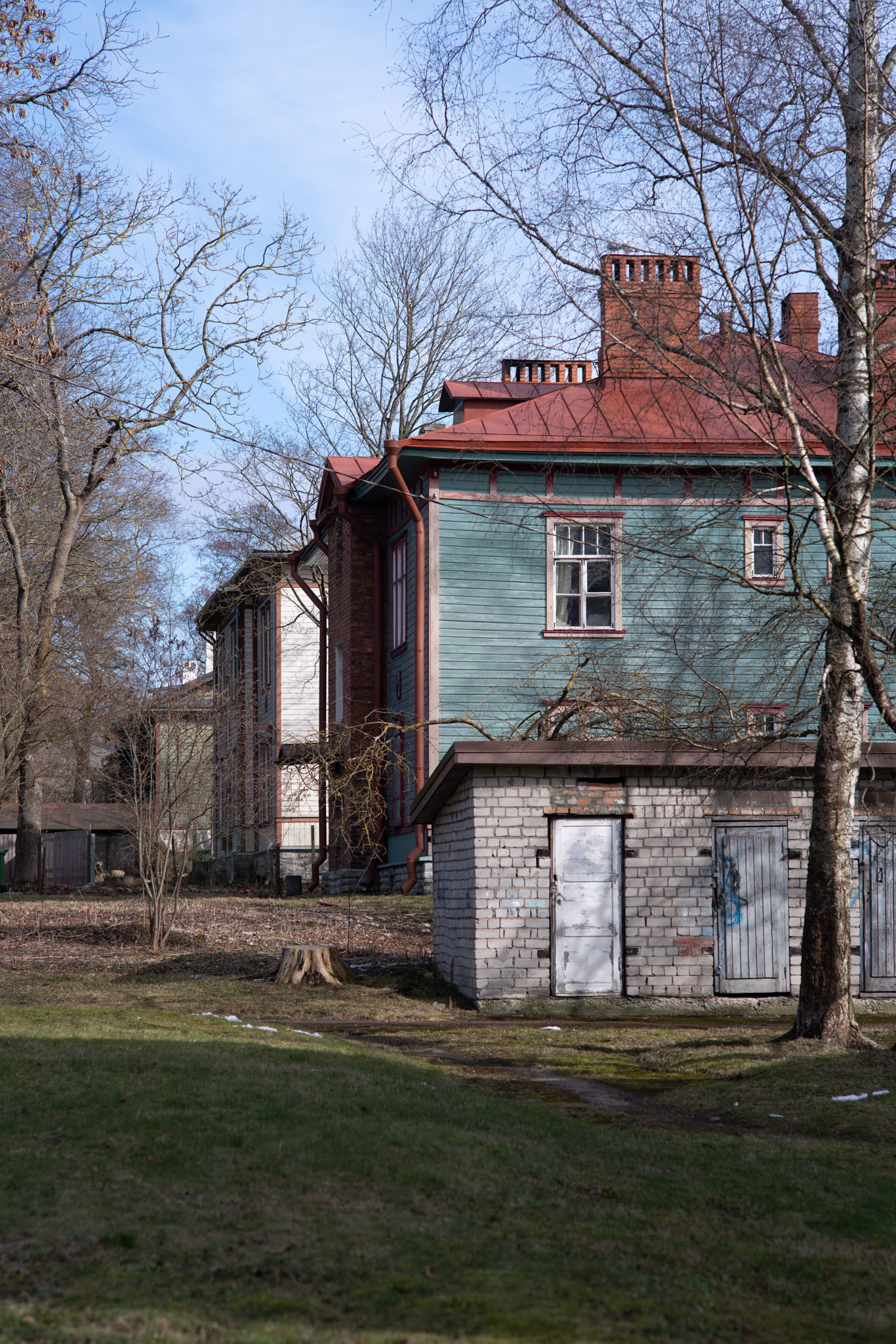
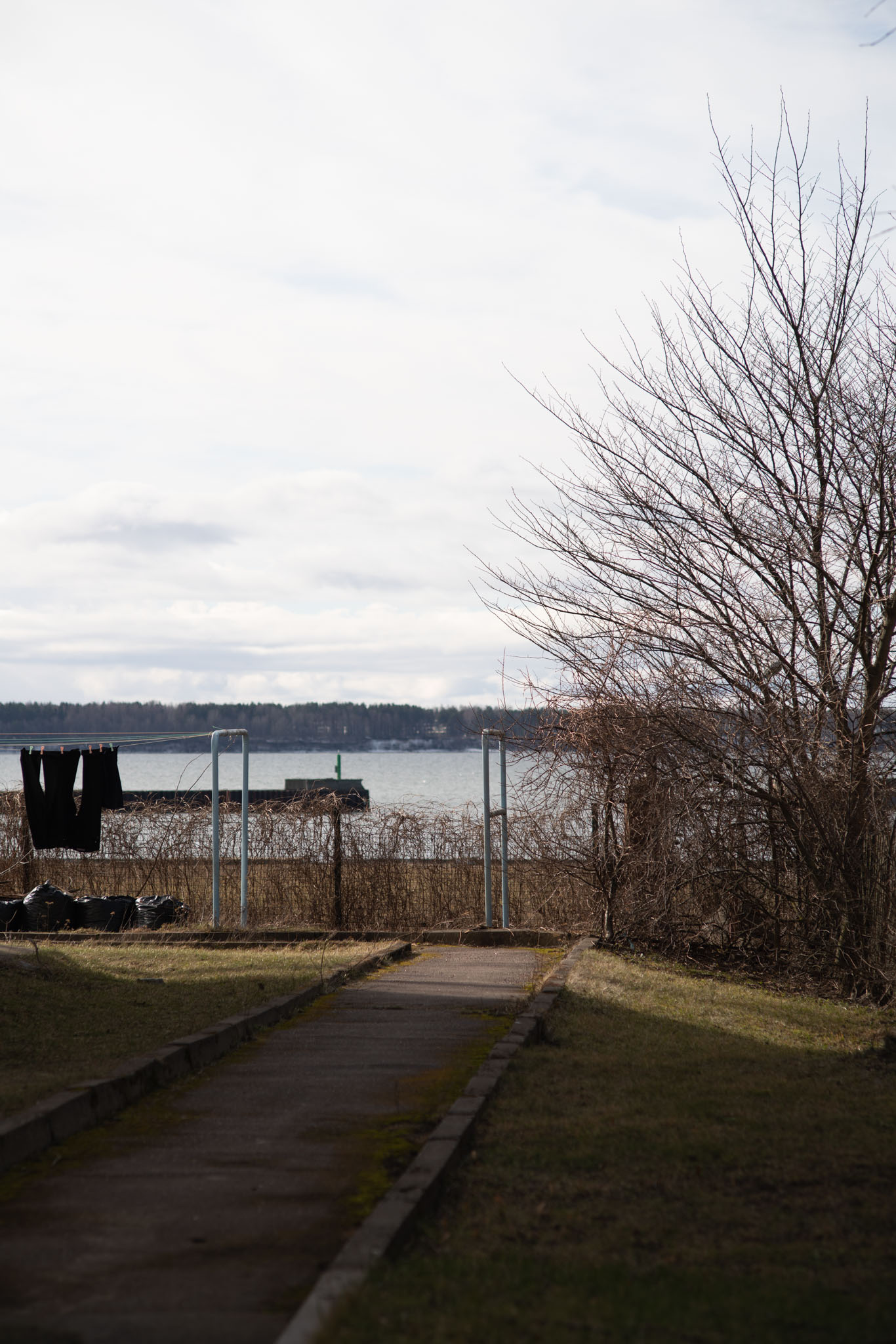
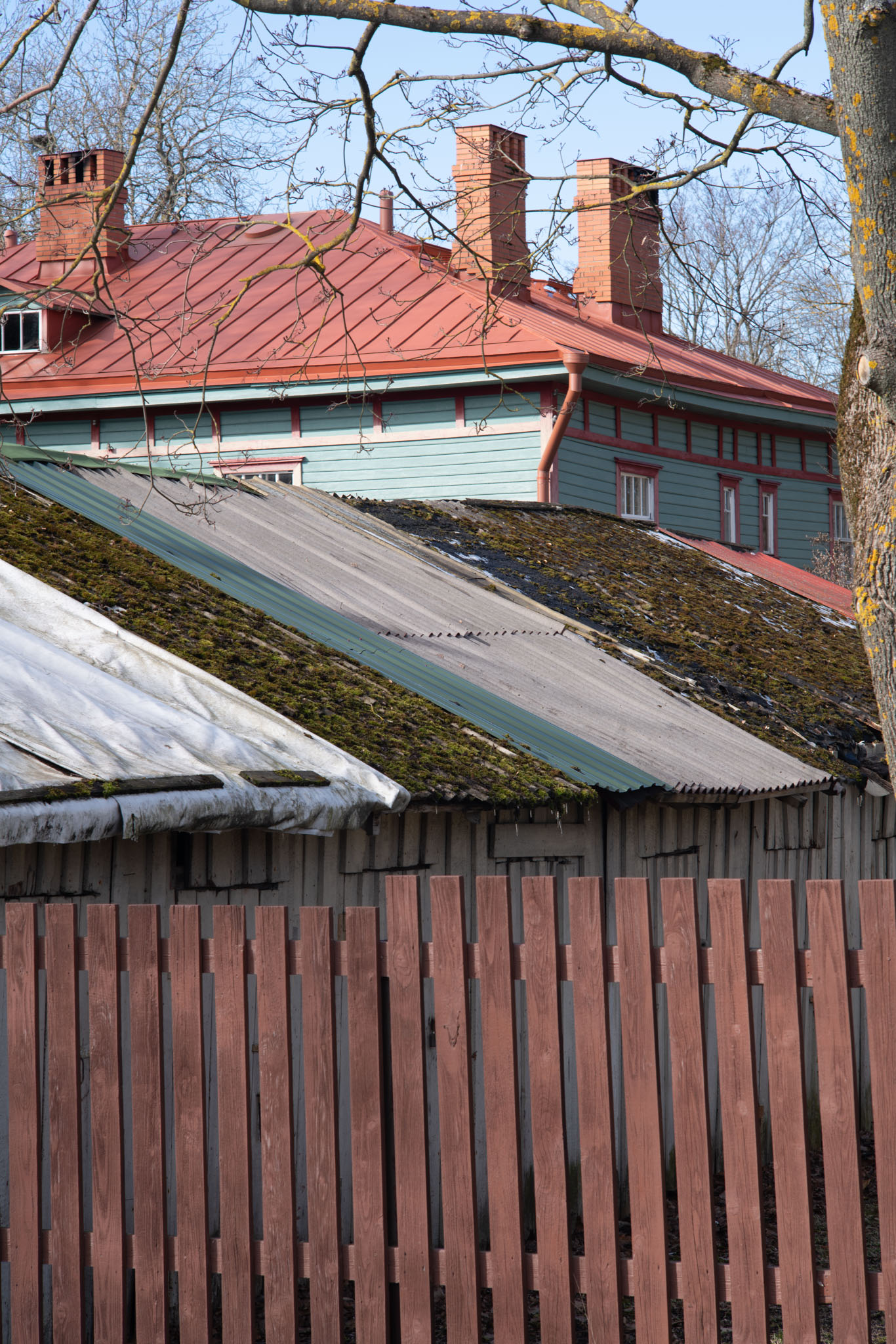
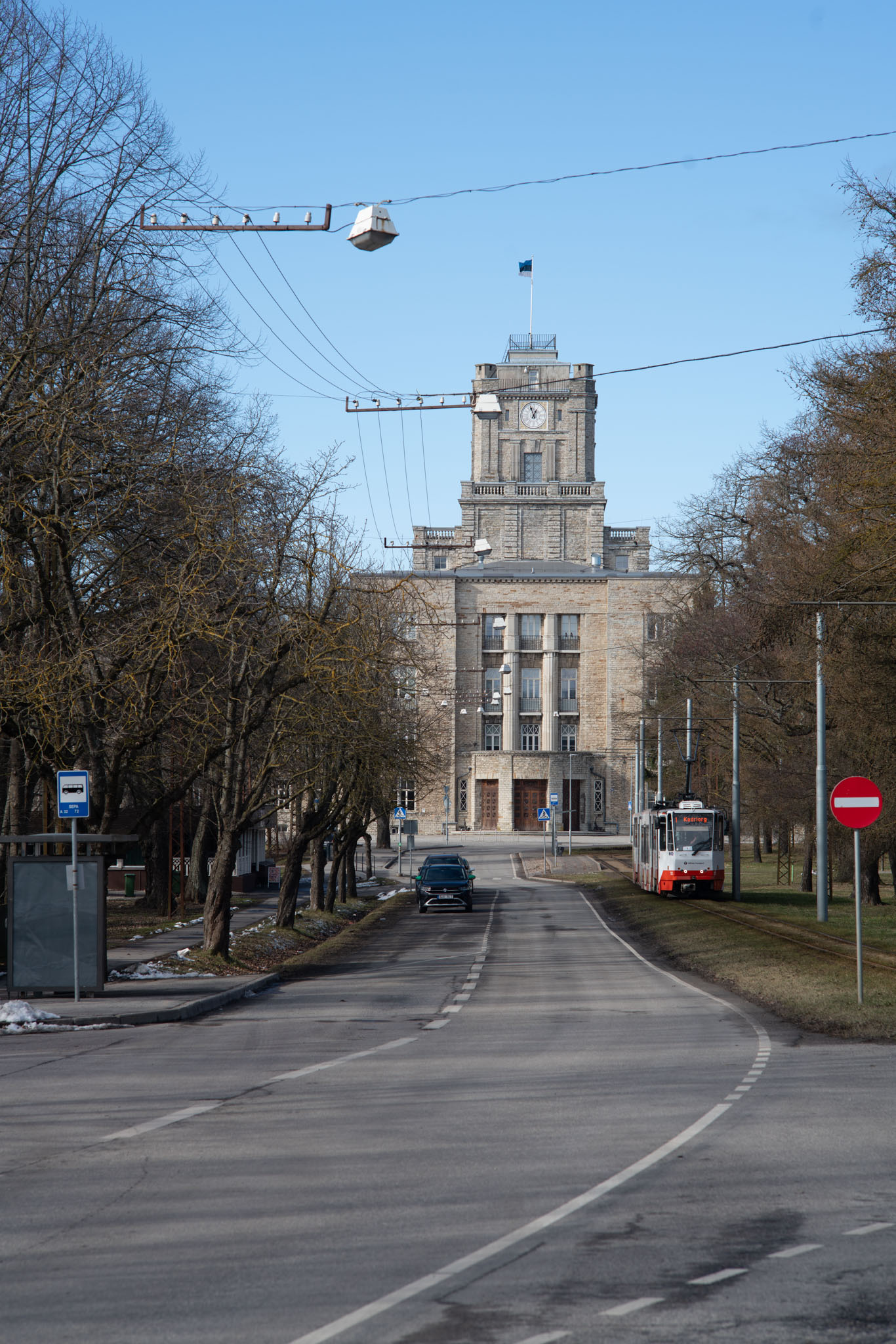

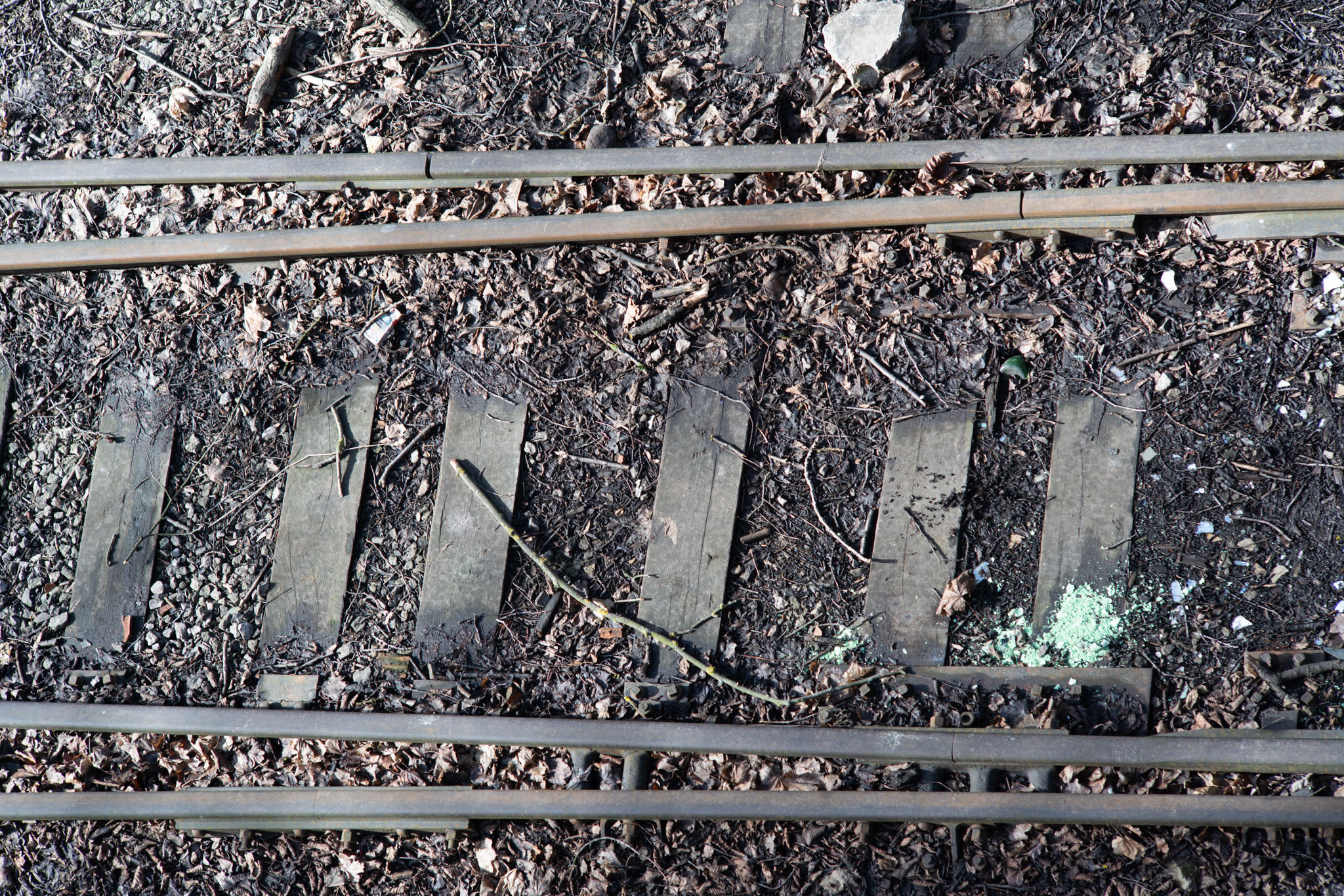
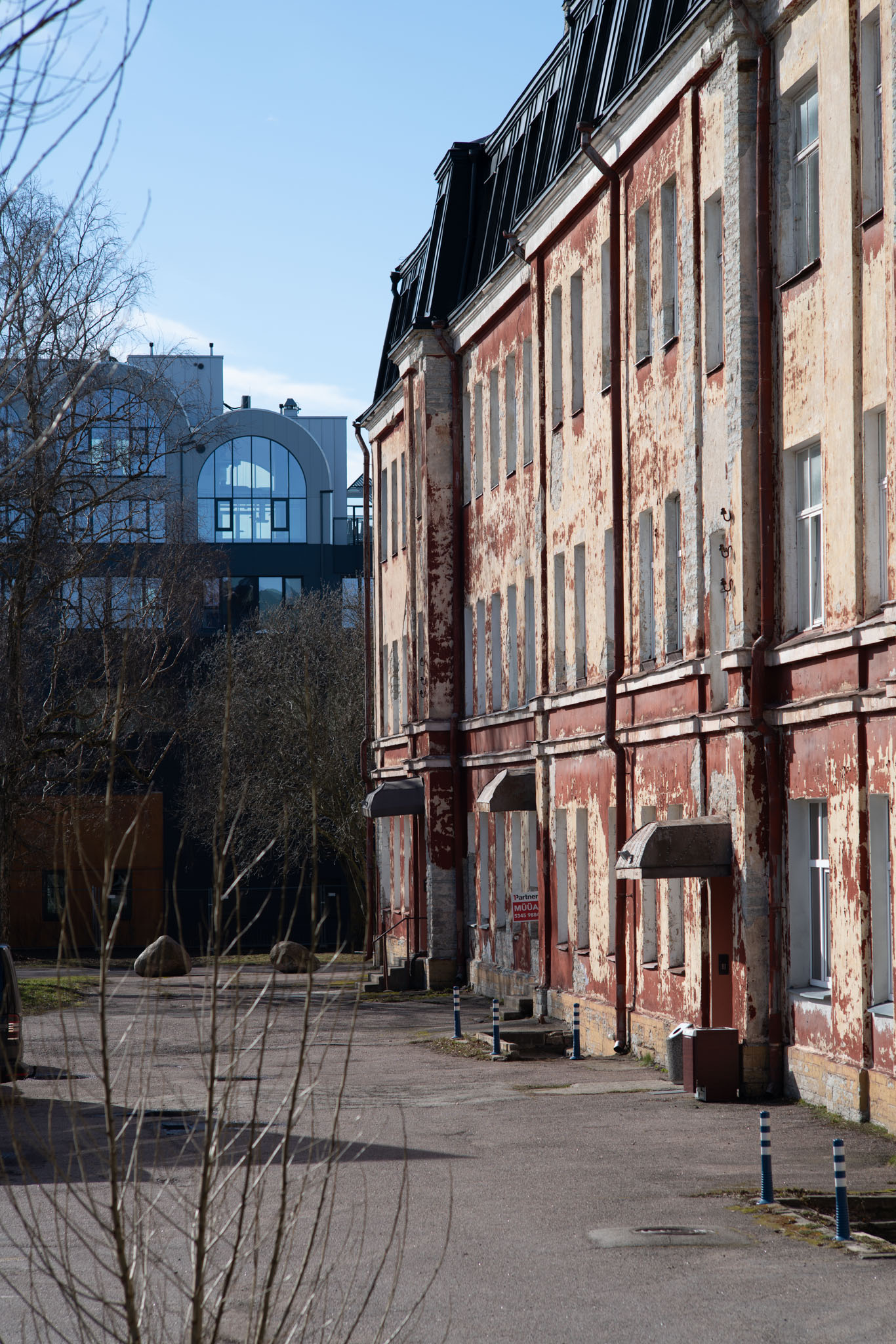
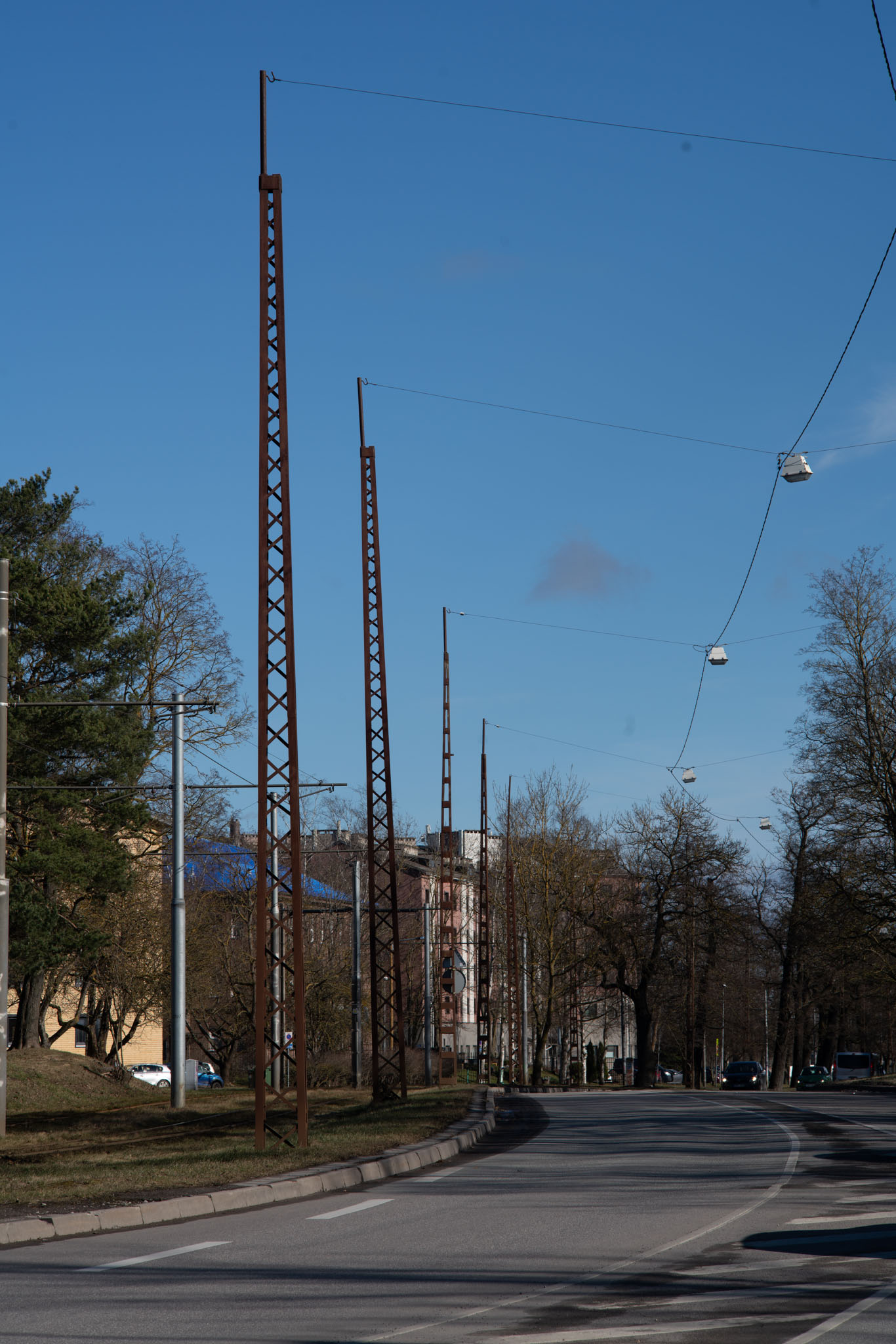
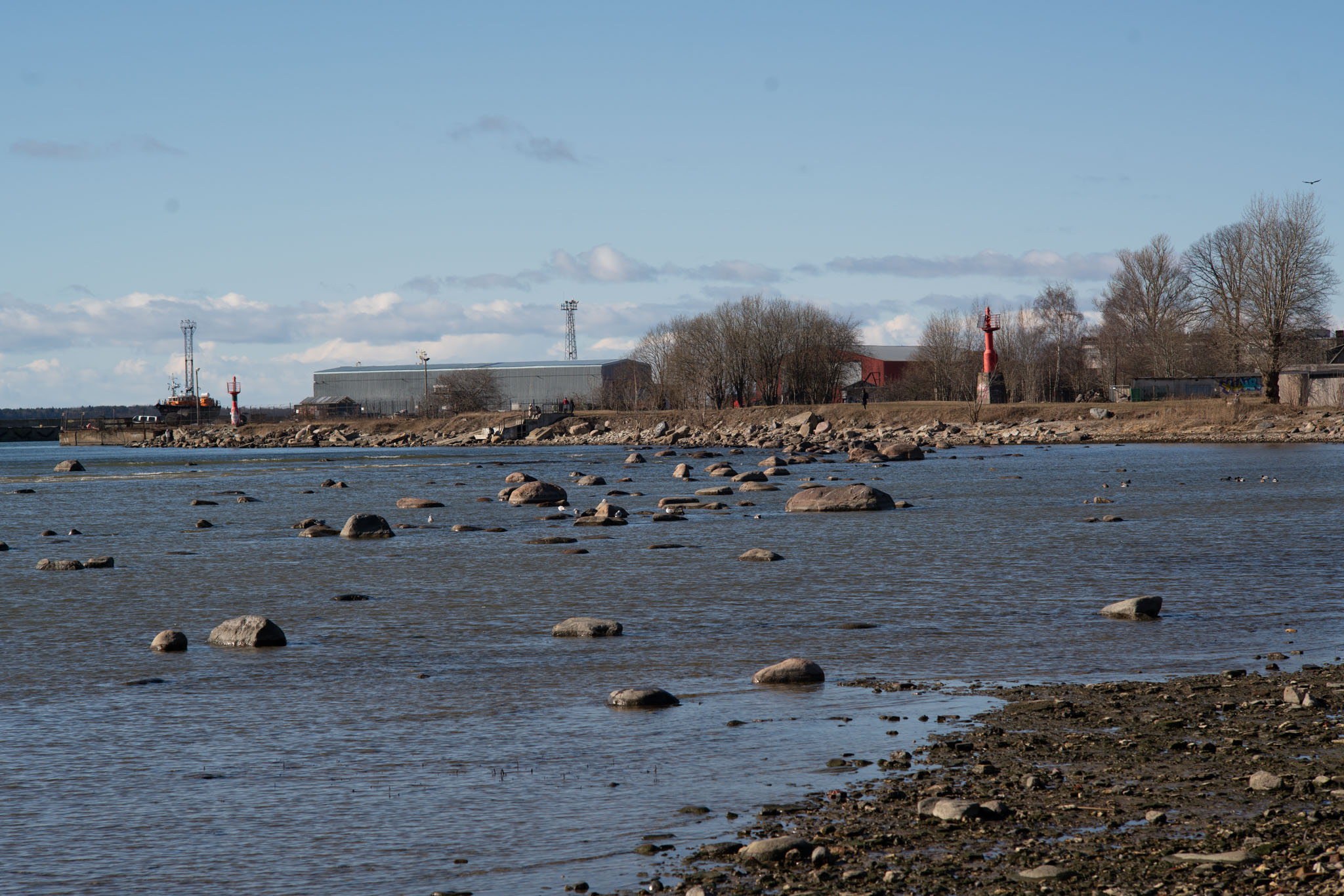
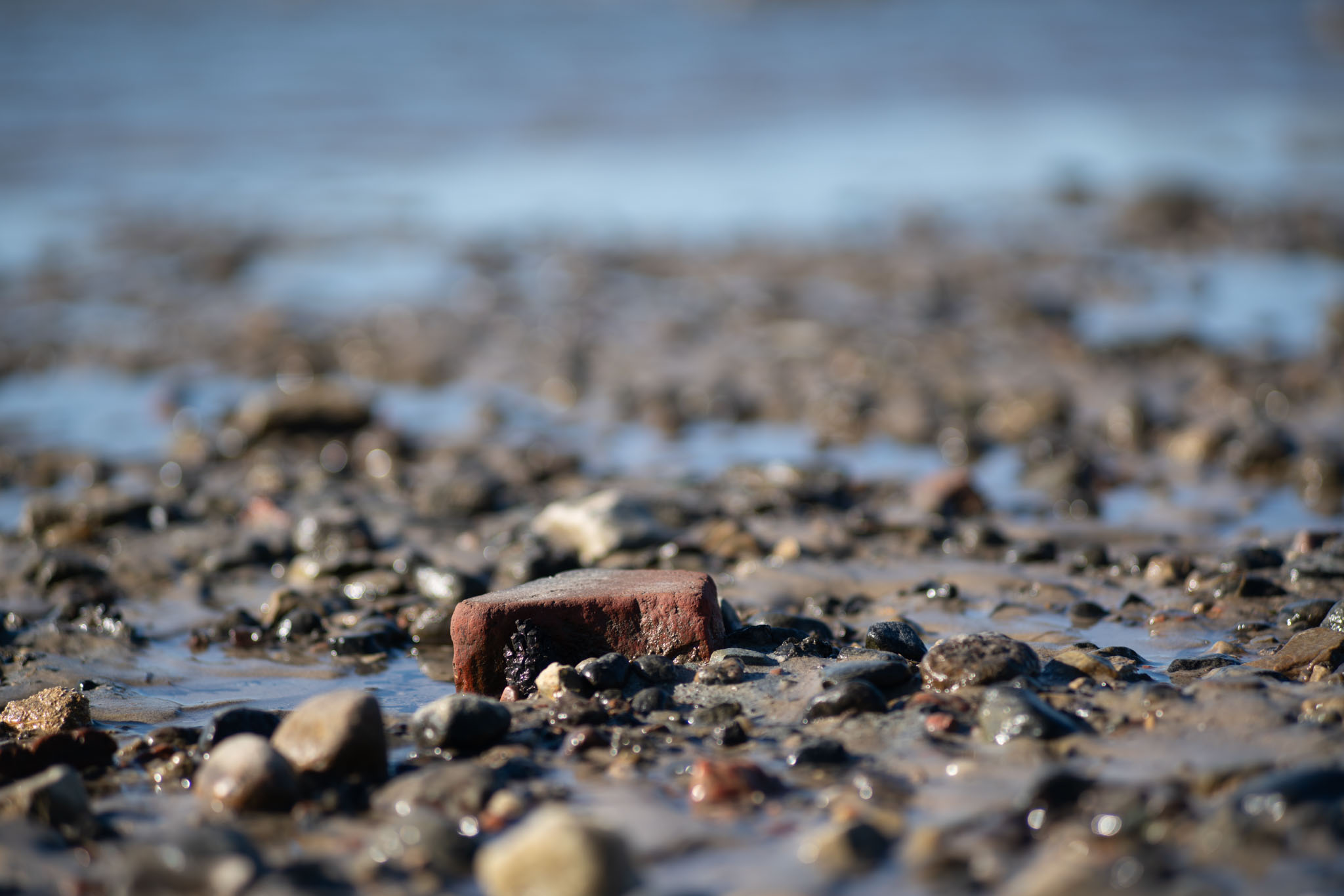
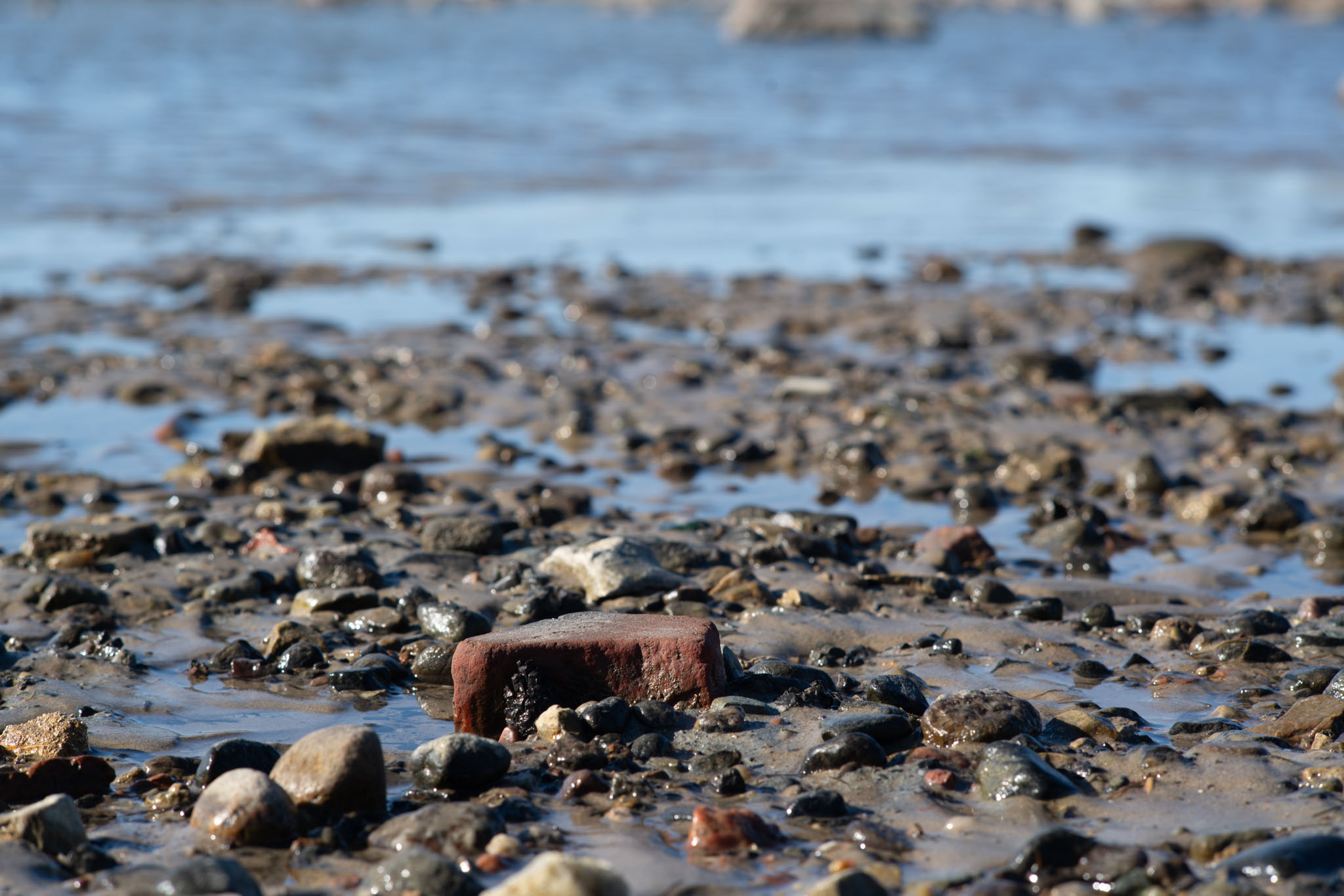
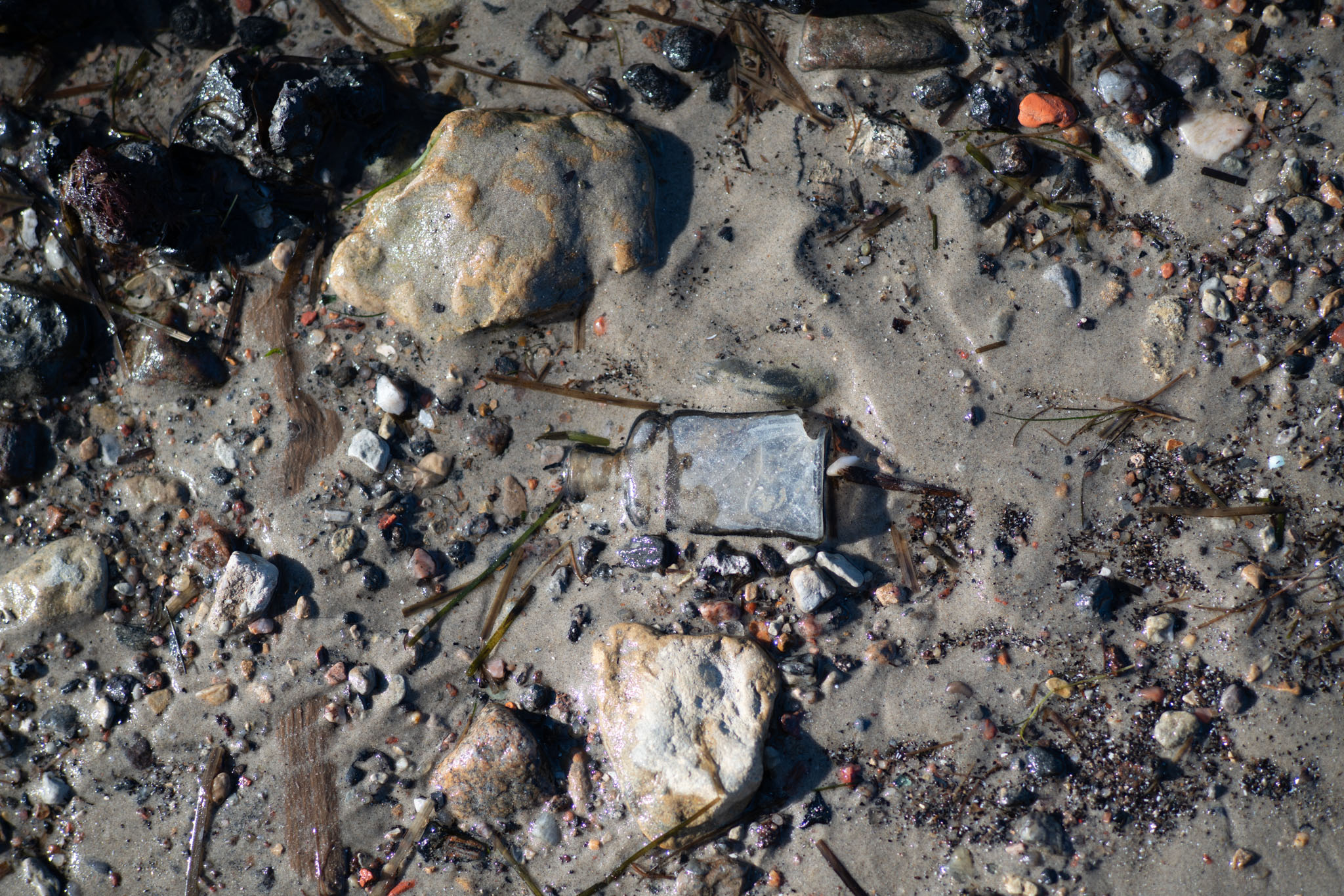
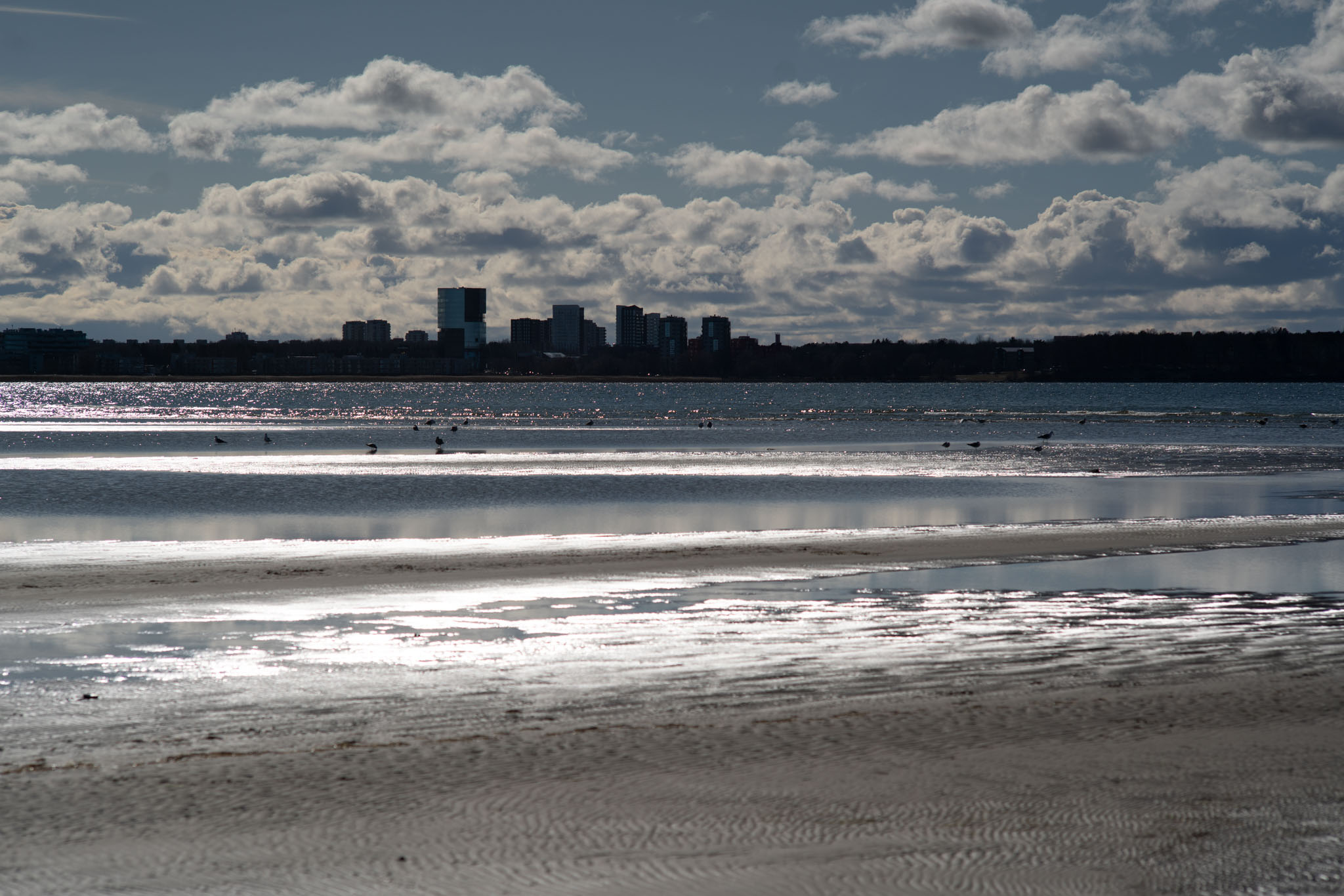
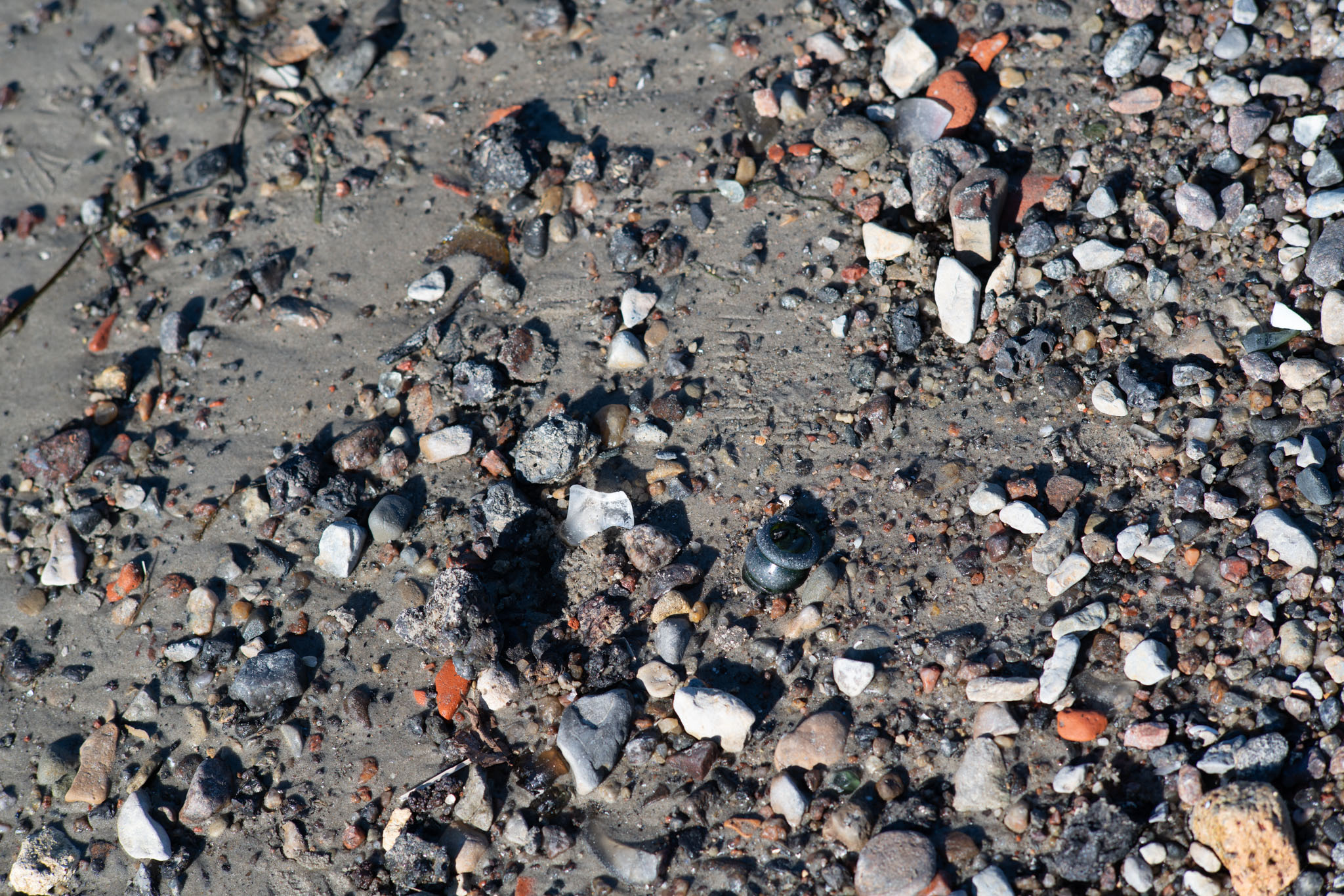
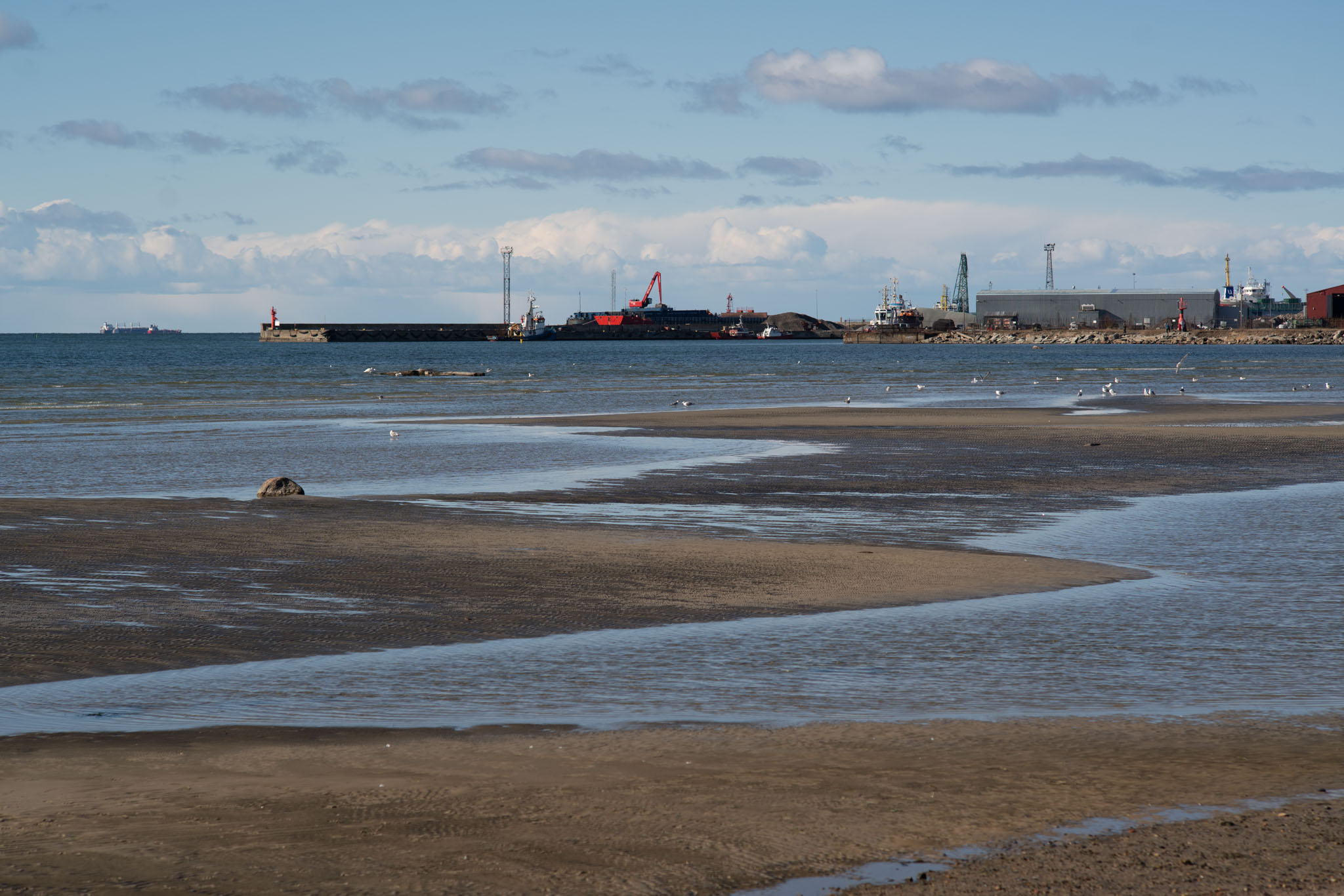
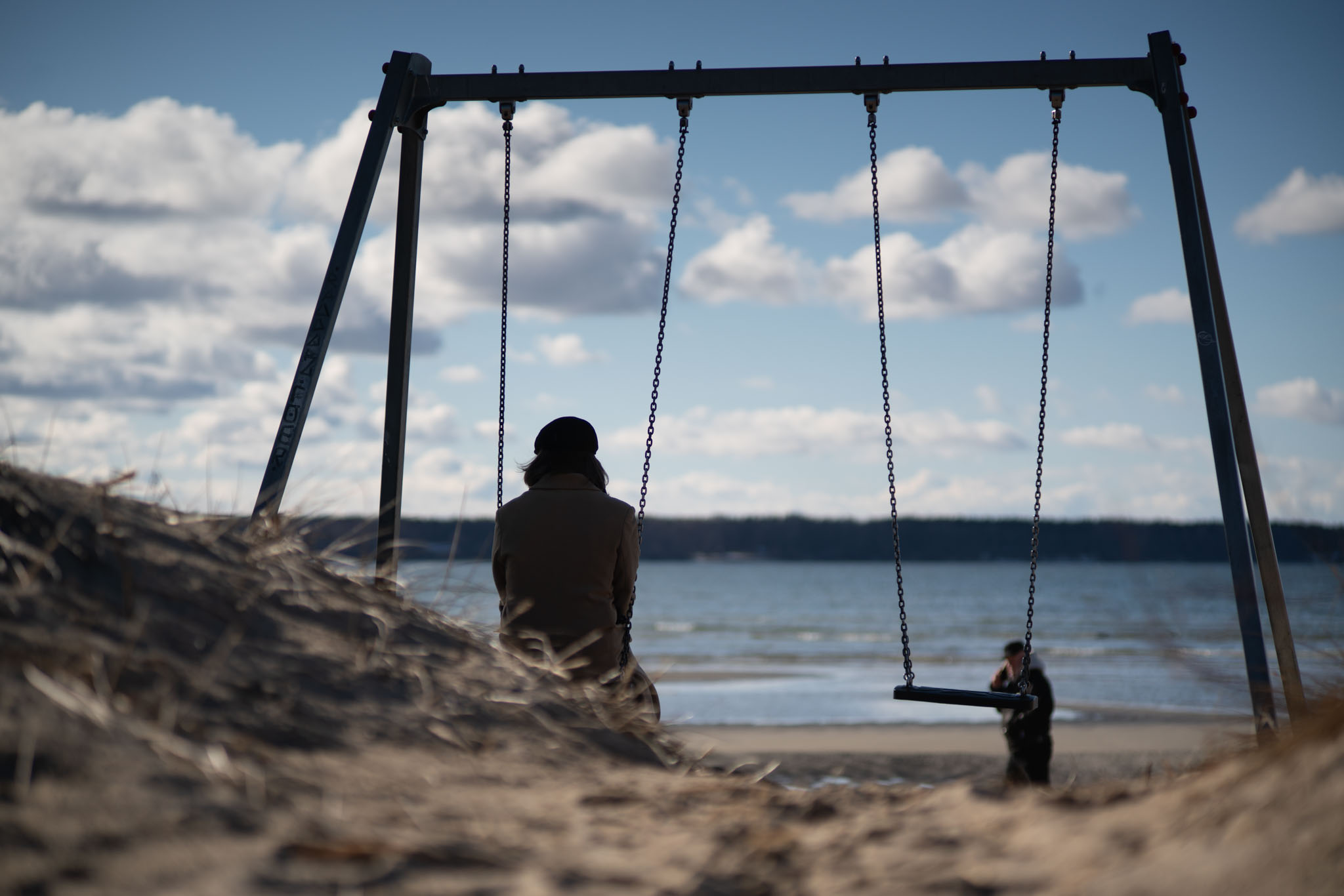
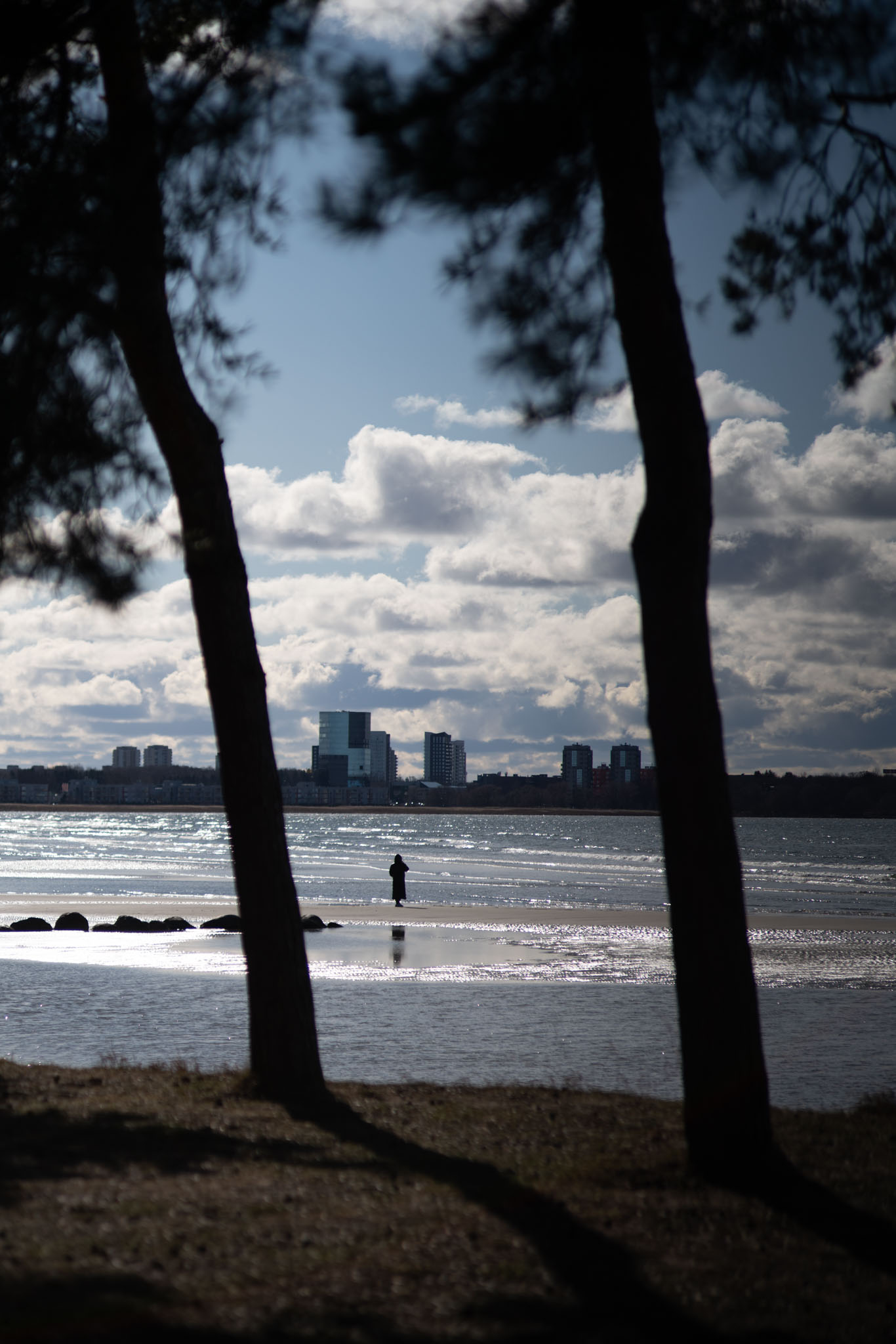

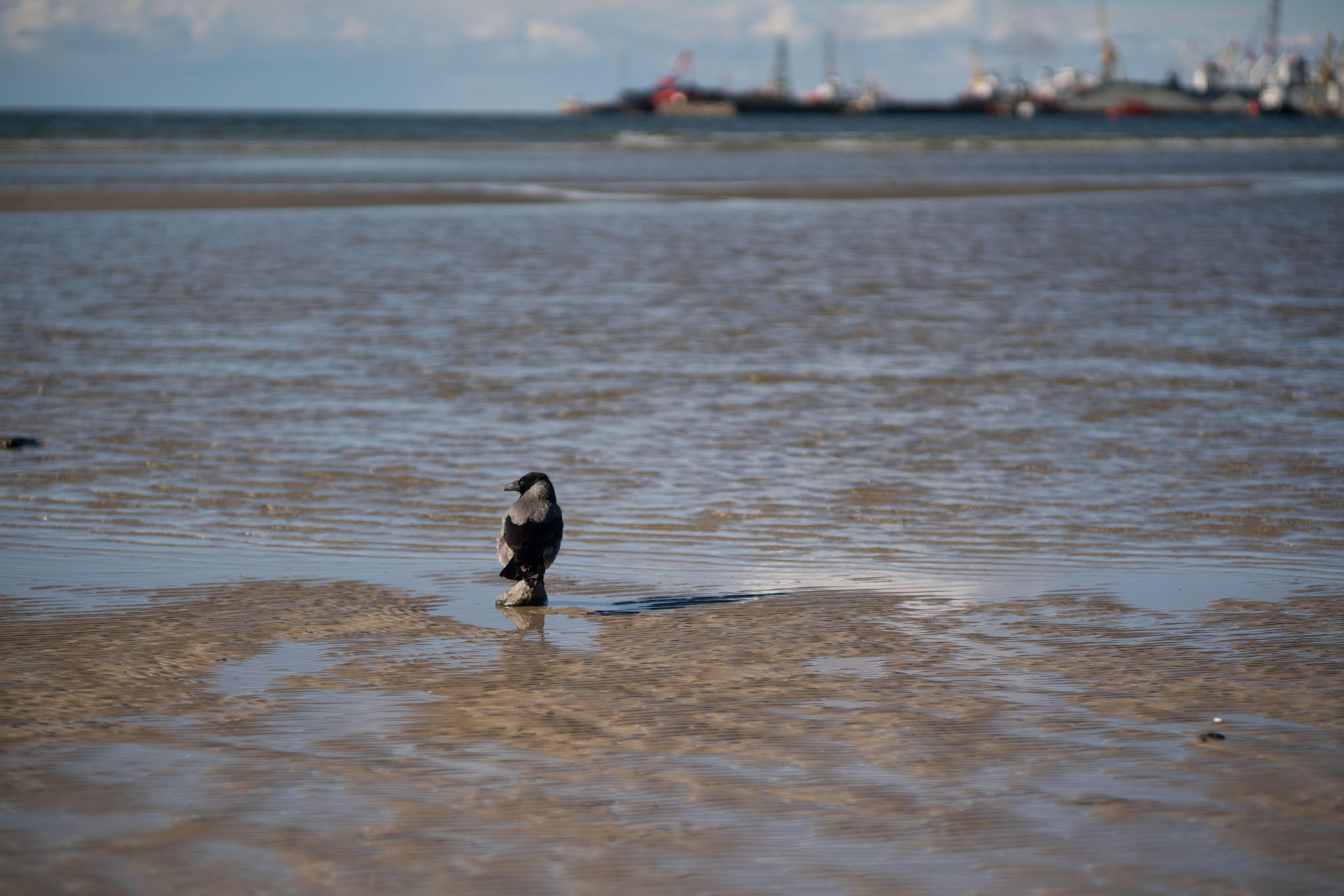
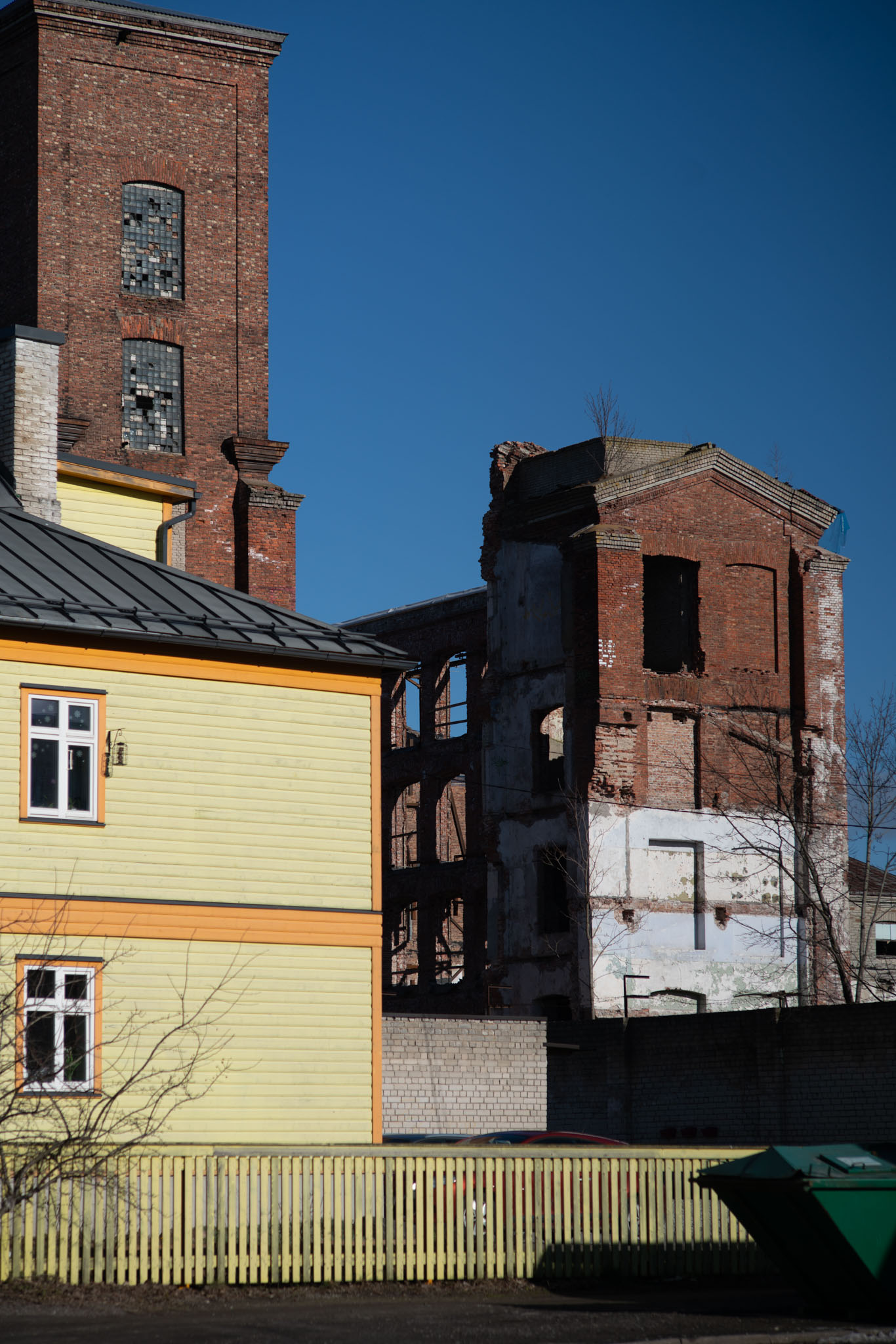
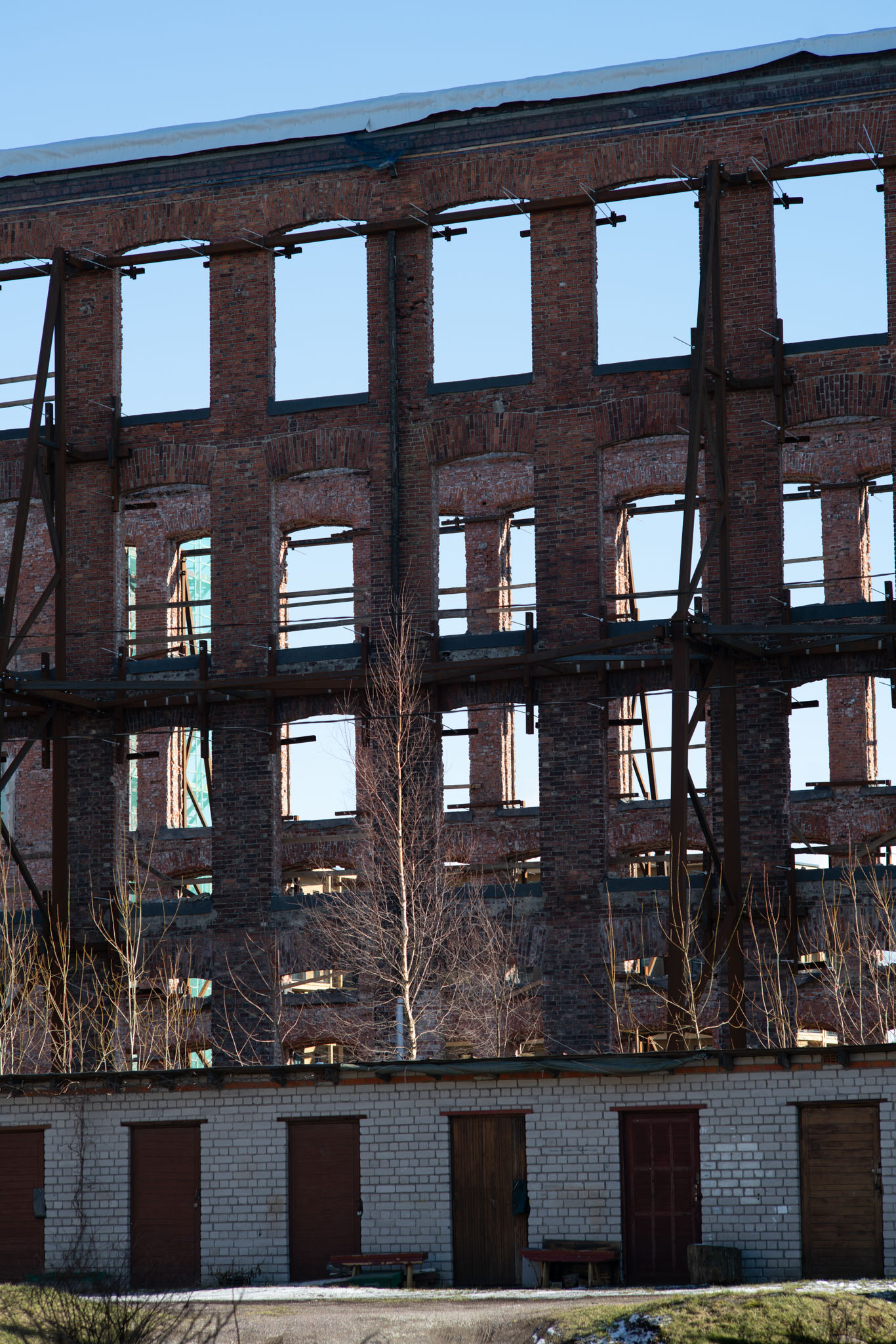

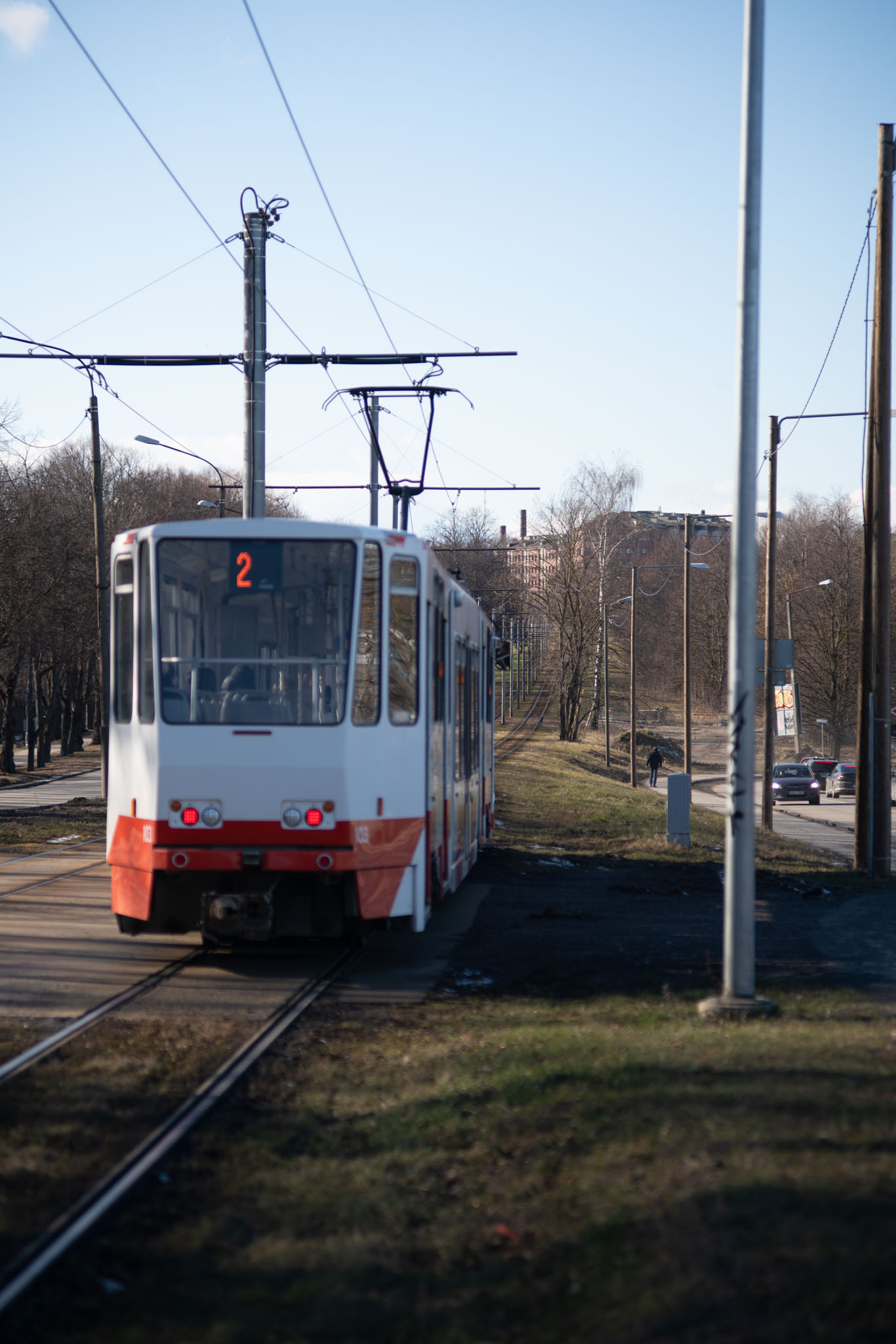
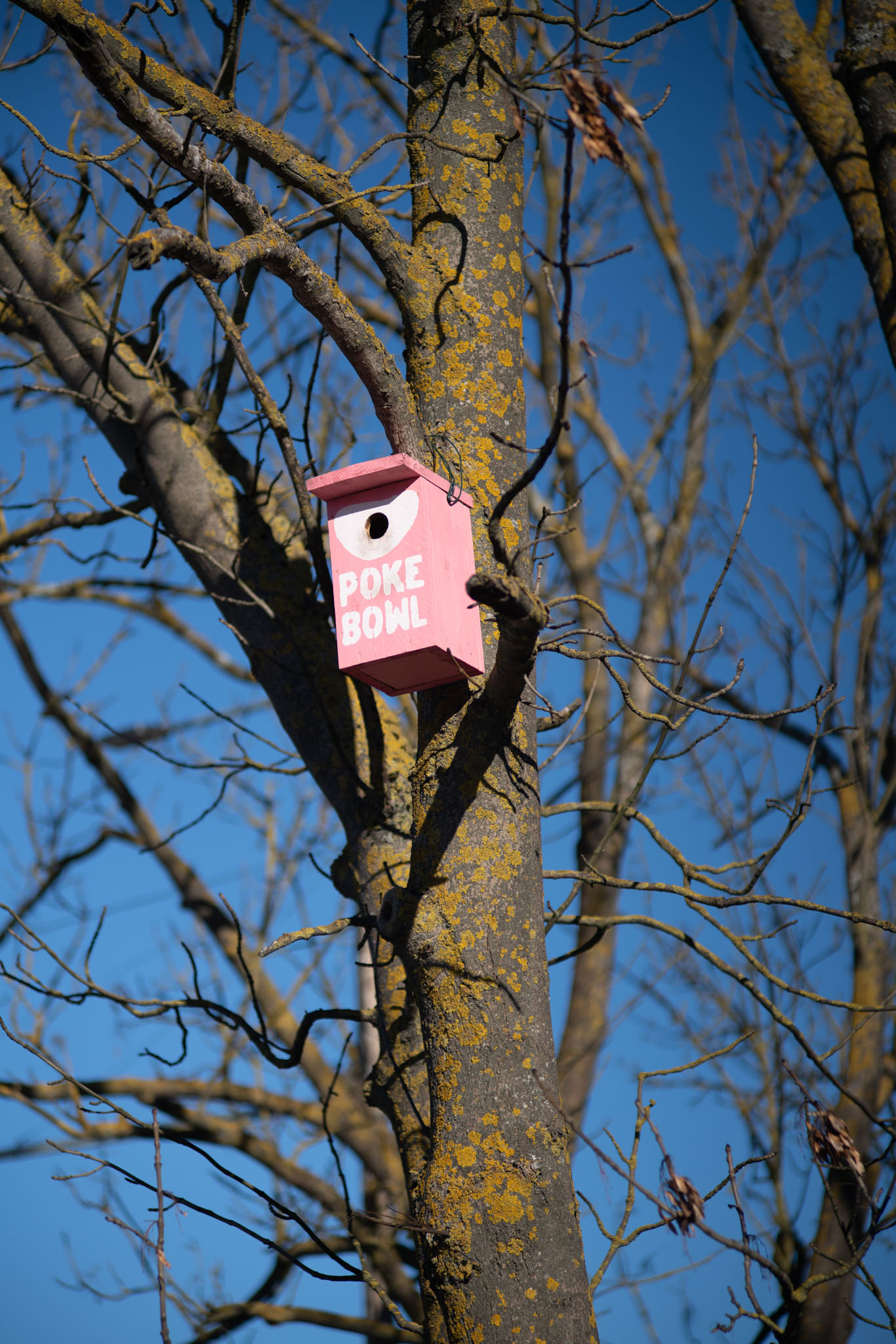
Footnotes
- Select “Remove Chromatic aberration”; In the ‘defringe’ sub menu,select the color picker and click on a point in your image that shows particularly clear CA’s) ↩︎

Comments